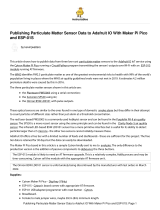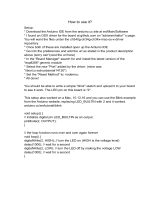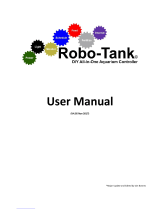instructables
Environment Monitor for Home Assistant With NodeMCU and DHT22
by taste_the_code
Step 1: The Custom PCB
I started exploring Home Assistant and in order to be able to start creating some automation, I needed to have the
current temperature and humidity values from my living room inside so I can act upon them.
There are commercial solutions available for this but I wanted to build my own so I can better learn how Home Assistant
works and how to set up custom devices with it and ESPHome.
The entire project is built on a custom-made PCB that I designed as a project platform for NodeMCU and was then
manufactured by my friends at PCBWay. You can order this board for yourself and have 10 pieces manufactured for just
$5 at: https://www.pcbway.com/project/shareproject/NodeMCU_Project_Platform_ce3fb24a.html
Supplies:
Project PCB: https://www.pcbway.com/project/shareproject/NodeMCU_Project_Platform_ce3fb24a.html
NodeMCU development board - https://s.click.aliexpress.com/e/_DmOegTZ
DHT22 Sensor - https://s.click.aliexpress.com/e/_Dlu7uqJ
HLK-PM01 5V power supply - https://s.click.aliexpress.com/e/_DeVps2f
5mm pitch PCB screw terminals - https://s.click.aliexpress.com/e/_DDMFJBz
Pin headers - https://s.click.aliexpress.com/e/_De6d2Yb
Soldering kit - https://s.click.aliexpress.com/e/_DepYUbt
Wire snips - https://s.click.aliexpress.com/e/_DmvHe2J
Rosin core solder - https://s.click.aliexpress.com/e/_DmvHe2J
Junction box - https://s.click.aliexpress.com/e/_DCNx1Np
Multimeter - https://s.click.aliexpress.com/e/_DcJuhOL
Soldering helping hand - https://s.click.aliexpress.com/e/_DnKGsQf
https://youtu.be/llUxs4VOwb4
I designed this PCB to serve as a project platform after spending so much time soldering custom NodeMCU projects on
prototyping PCBs.
The PCB has a position for NodeMCU, I2C devices, SPI devices, relays, a DHT22 sensor as well as UART and an HLK-PM01
power supply that can then power the project from AC mains.




















